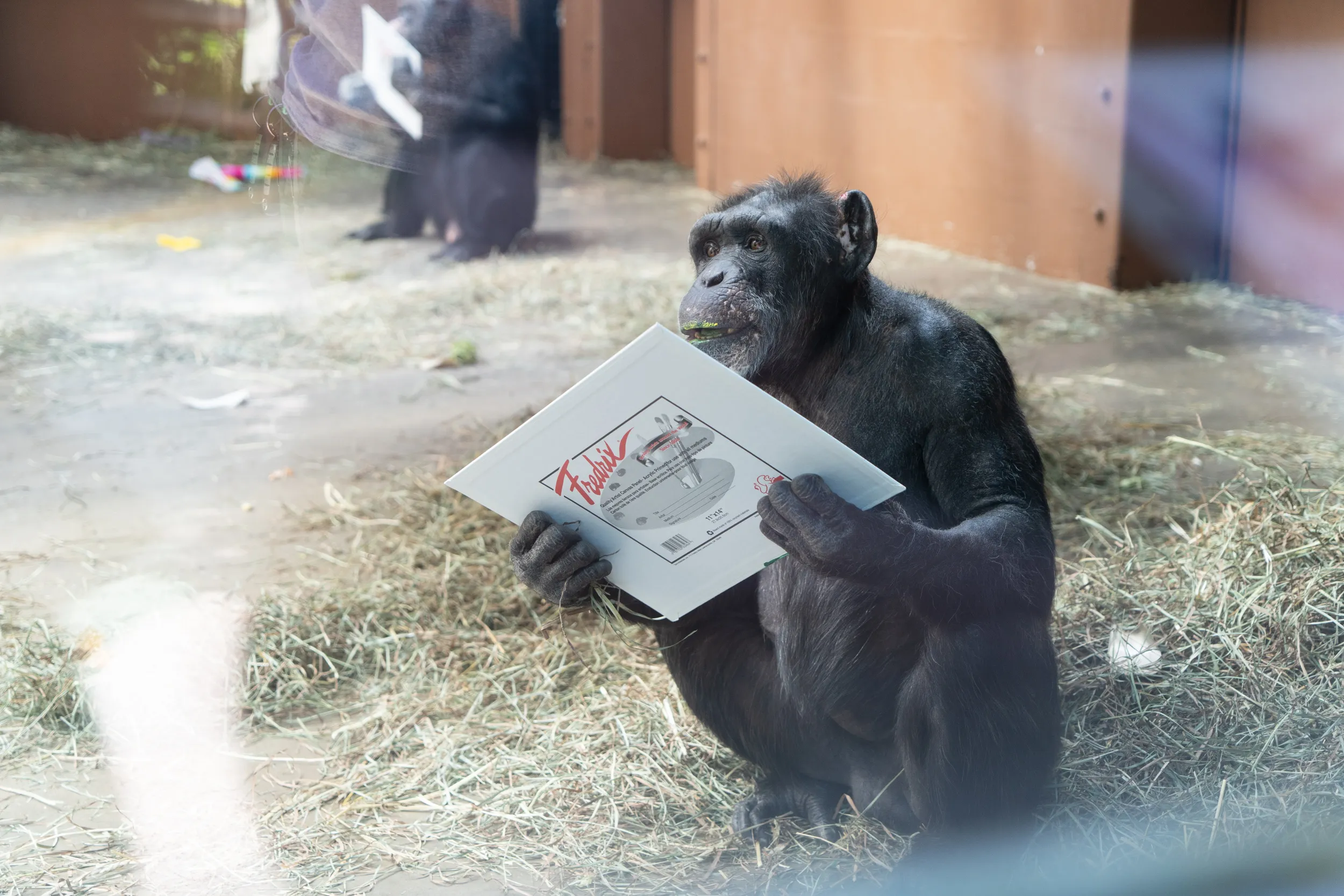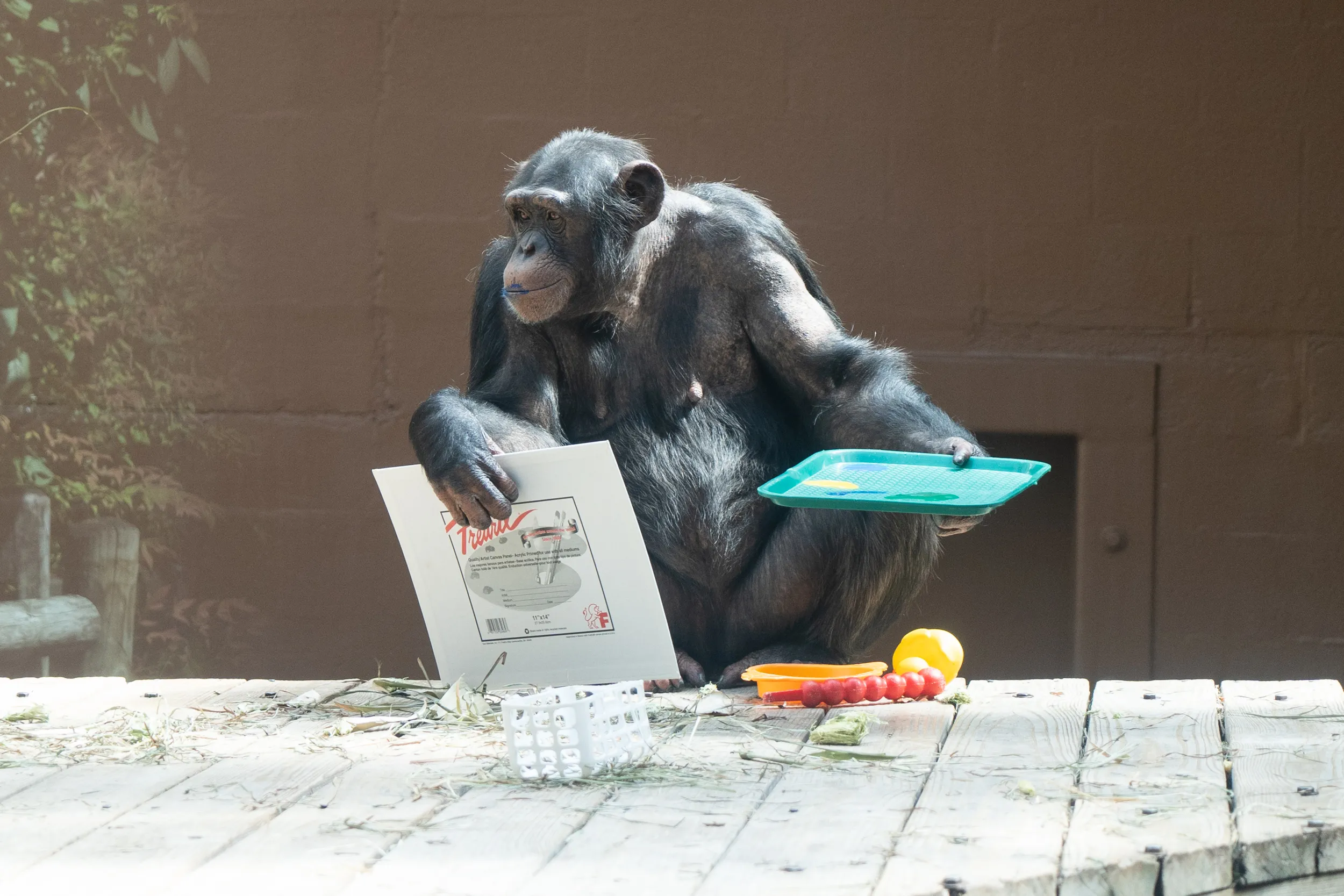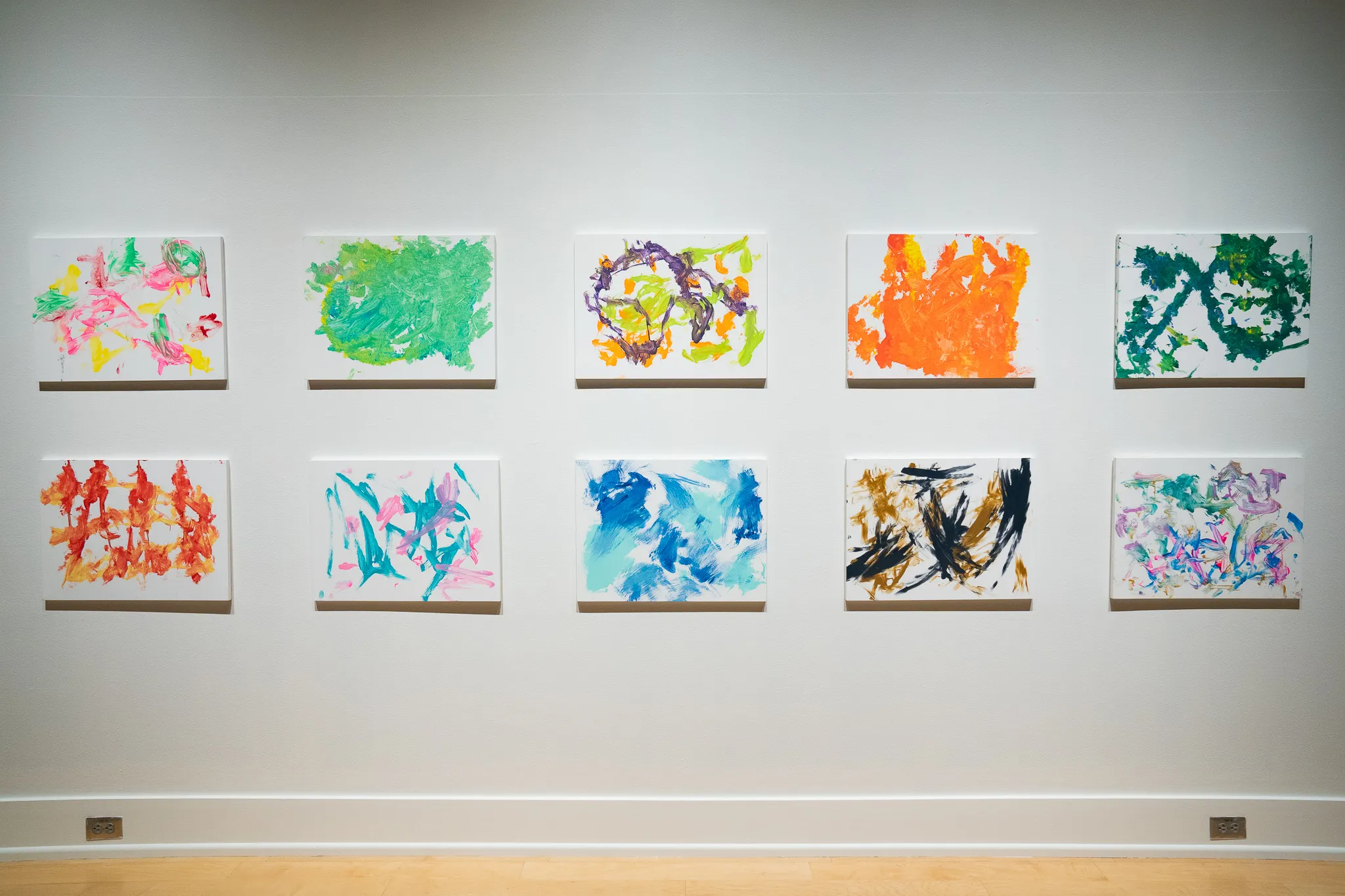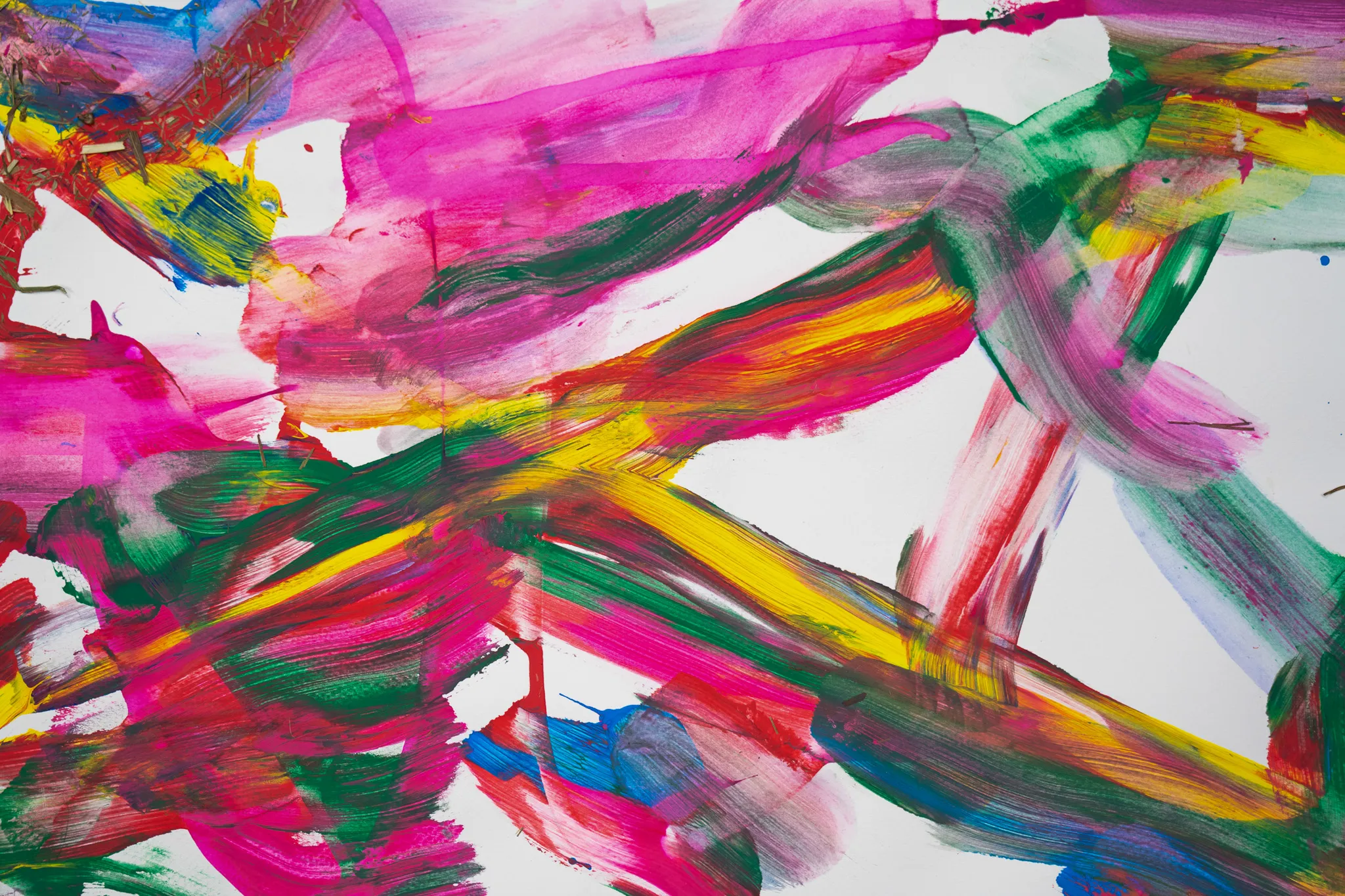
98.6
A Creative Commonality
Ongoing
"If you look into their eyes, you know you're looking into a thinking mind."
Jane Goodall
Art made by Great Apes?
In 2021, we had the pleasure of working with Zoo Knoxville and the Center for Great Apes to curate an exhibition of artwork created by chimpanzees and orangutans. While a seemingly radical idea, we believe the story (and plight) of the great apes is very important to understand. Because these beings can also feel and enjoy creativity, this provides an opportunity to discuss the similarities we share…
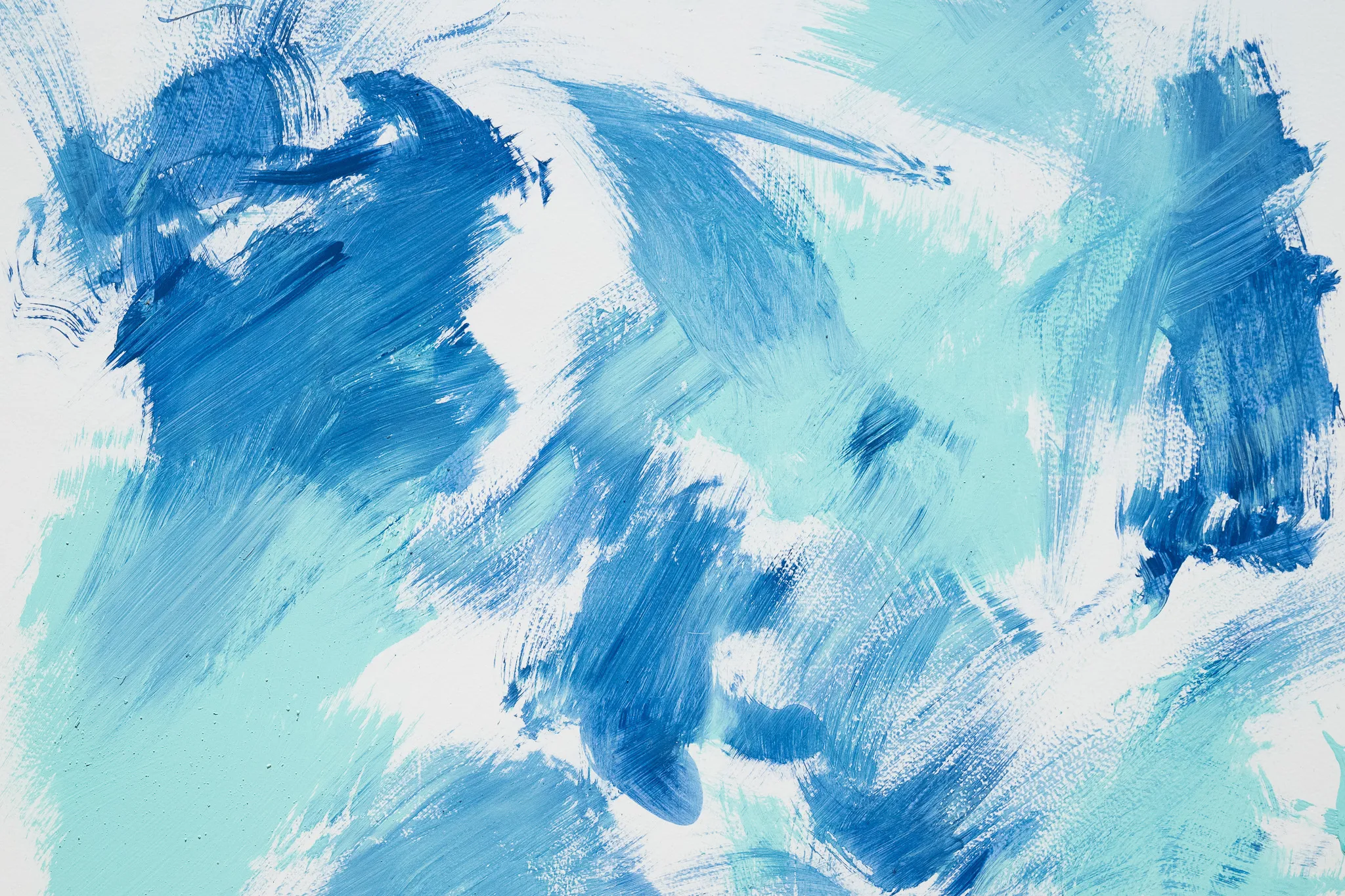
This is an ongoing project. New relationships with sanctuaries across the United States are growing as we continue to explore exhibition and film opportunities to collaborate with these institutions. We believe it is critical to share the story of the great apes and celebrate the institutions that protect and care for these wonderful creatures.
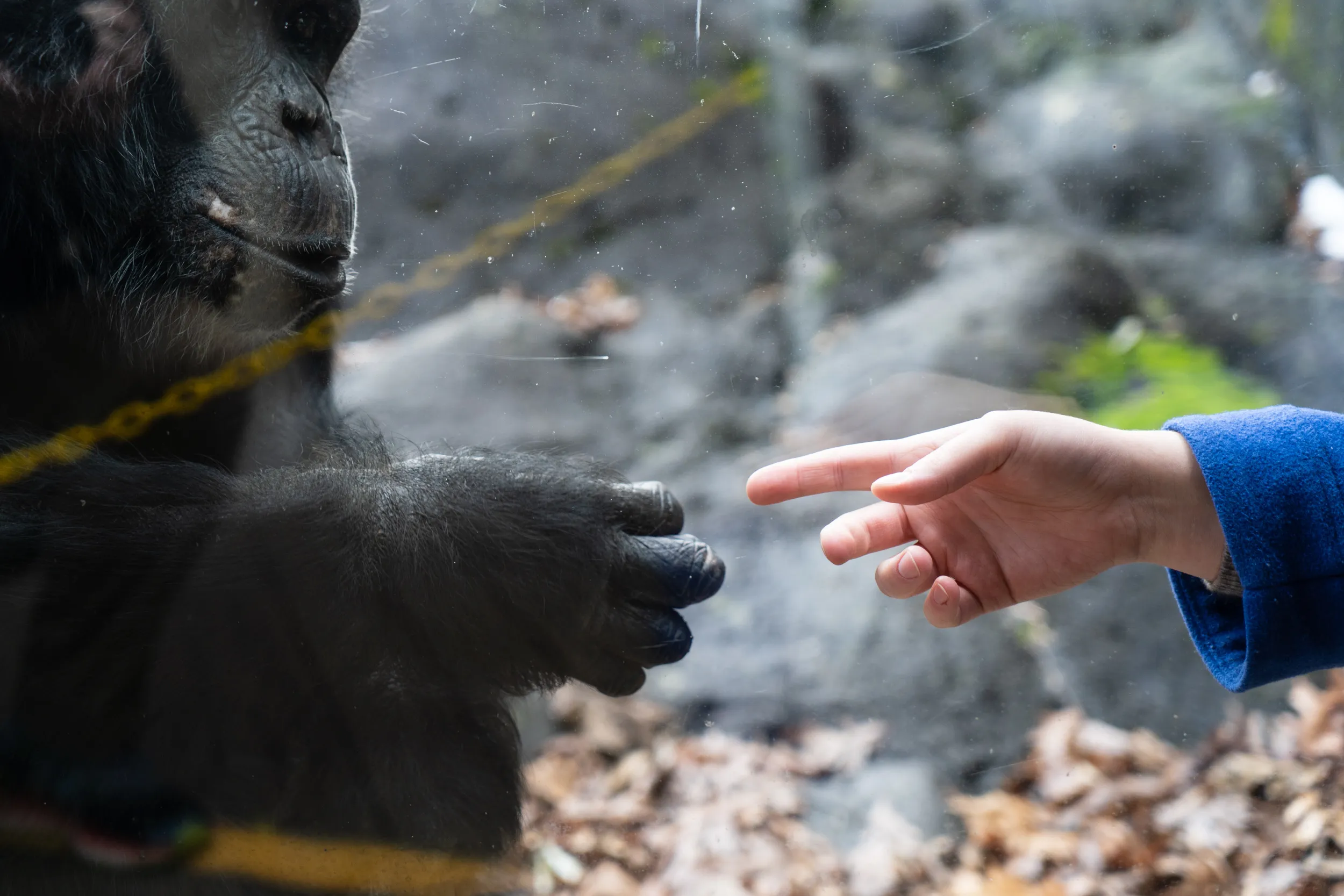
Humans and Chimpanzees share 98.6% of the same DNA.
Exhibition Statement from 2021 Installation:
Both species have forward-facing eyes, opposing thumbs that accompany grasping fingers, and the ability to walk upright. Far greater than just the physical similarities, both species have large brains capable of exhibiting great intelligence as well as an incredible emotional range. Chimpanzees form tight social bonds, especially between mothers and children, create tools to assist with eating and express joy by hugging and kissing one another.
Over 1,000,000 chimpanzees roamed the tropical rain forests of Africa just a century ago. Now listed as endangered, less than 300,000 exist in the wild because of poaching, the illegal pet trade and habitat loss due to human encroachment. Often, chimpanzees are killed, leaving orphans that are traded and sold around the world.
In the United States, the Association of Zoos and Aquariums (AZA) and the Species Survival Plan (SSP) work together across the nation in a cooperative effort to promote population growth and ensure the utmost care and conditions for all species.
Included in the daily programs for many species is what’s commonly known as “enrichment”–– an activity created and employed to stimulate and pose a challenge, such as hiding food and treats throughout an enclosure that requires a search for food, sometimes with a problem-solving component.
In the case of chimpanzees and other great apes, research has shown that certain individuals respond to color and enjoy painting as a type of enrichment. Like human artists, each chimpanzee has a unique reaction and approach to their canvas. While most chimpanzees enjoy using their hands and feet, occasionally even their lips, some have even learned how to use a paintbrush.
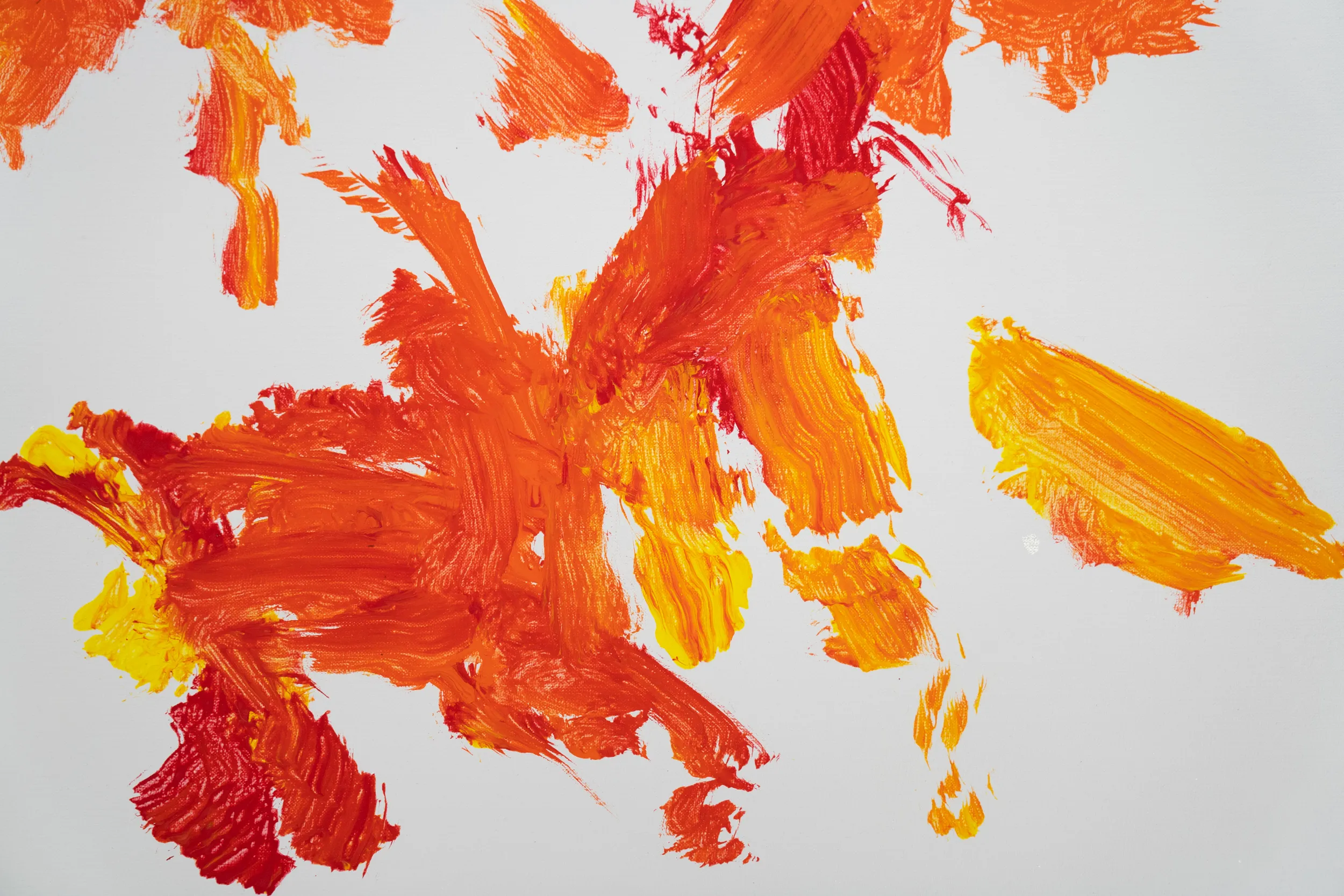
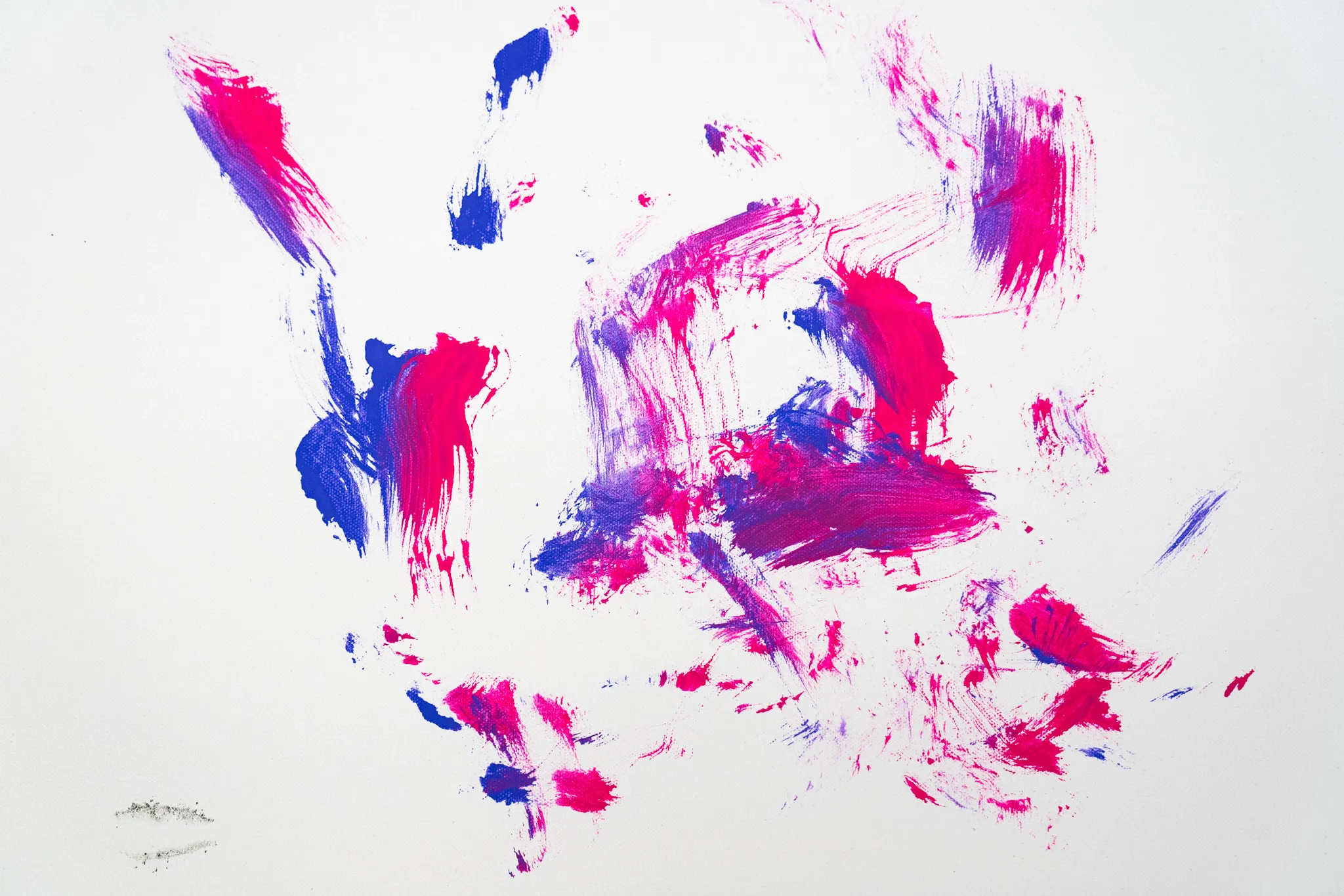
Reflecting on the concept of 98.6%, our shared DNA, and the vast number of similarities between humans and chimpanzees, we celebrate our likeness. At the same time, we ponder questions as we explore our creative commonality: Are we really so different? In fact, the comparison of DNA between chimpanzees and humans is higher than that of chimpanzees and gorillas.
How much DNA do we share with other creatures? Is the creative drive, once thought to be the sole domain of humans, found across the animal world? And what other mysteries about the links between humans and animals remain unsolved? With a constantly changing, growing and evolving relationship between humans and the earth, and one another, our similarities–– and at times a creative commonality–– remain our foundation, a gravitational force that pulls us together, an enduring and unbreakable bond.
